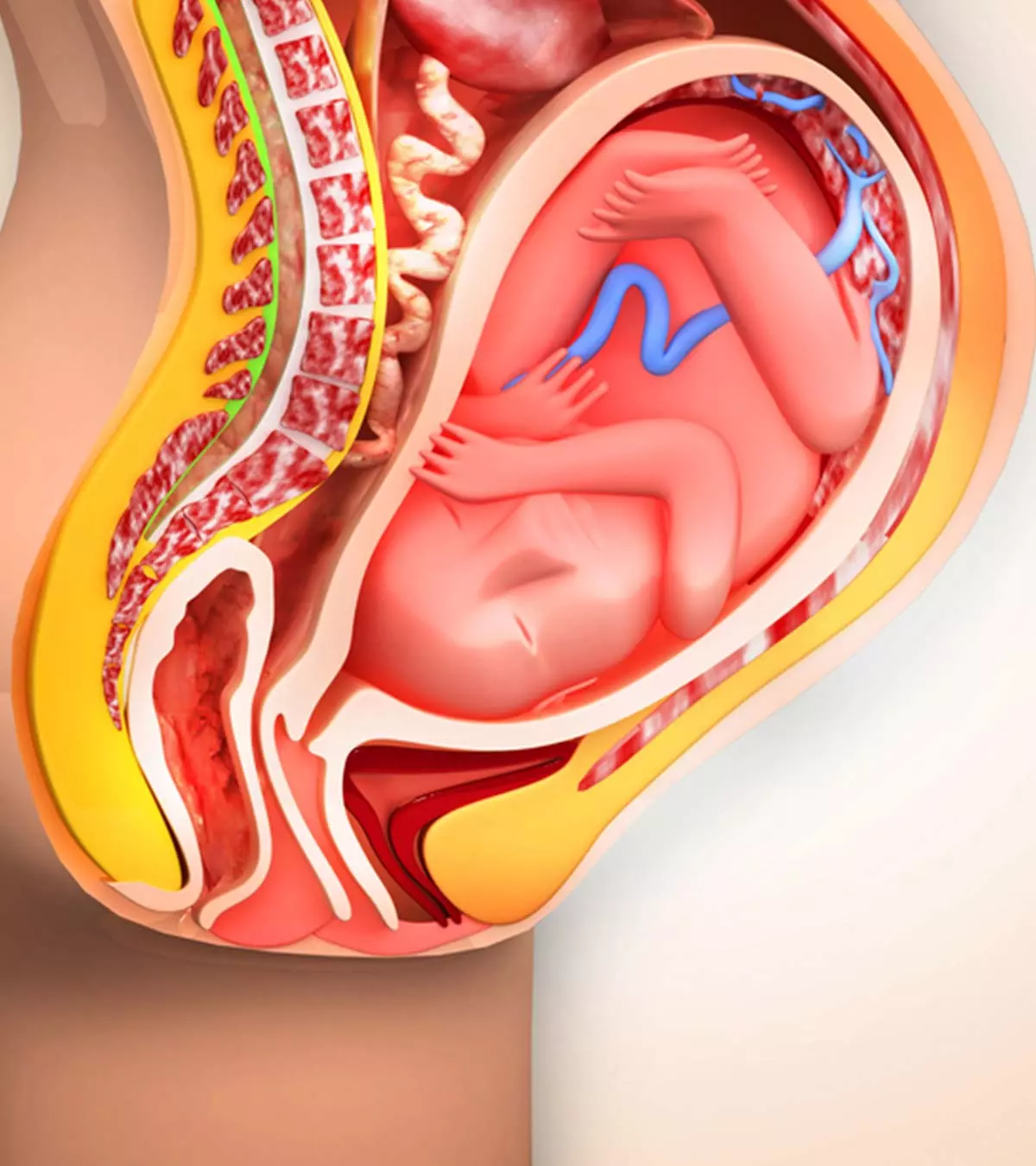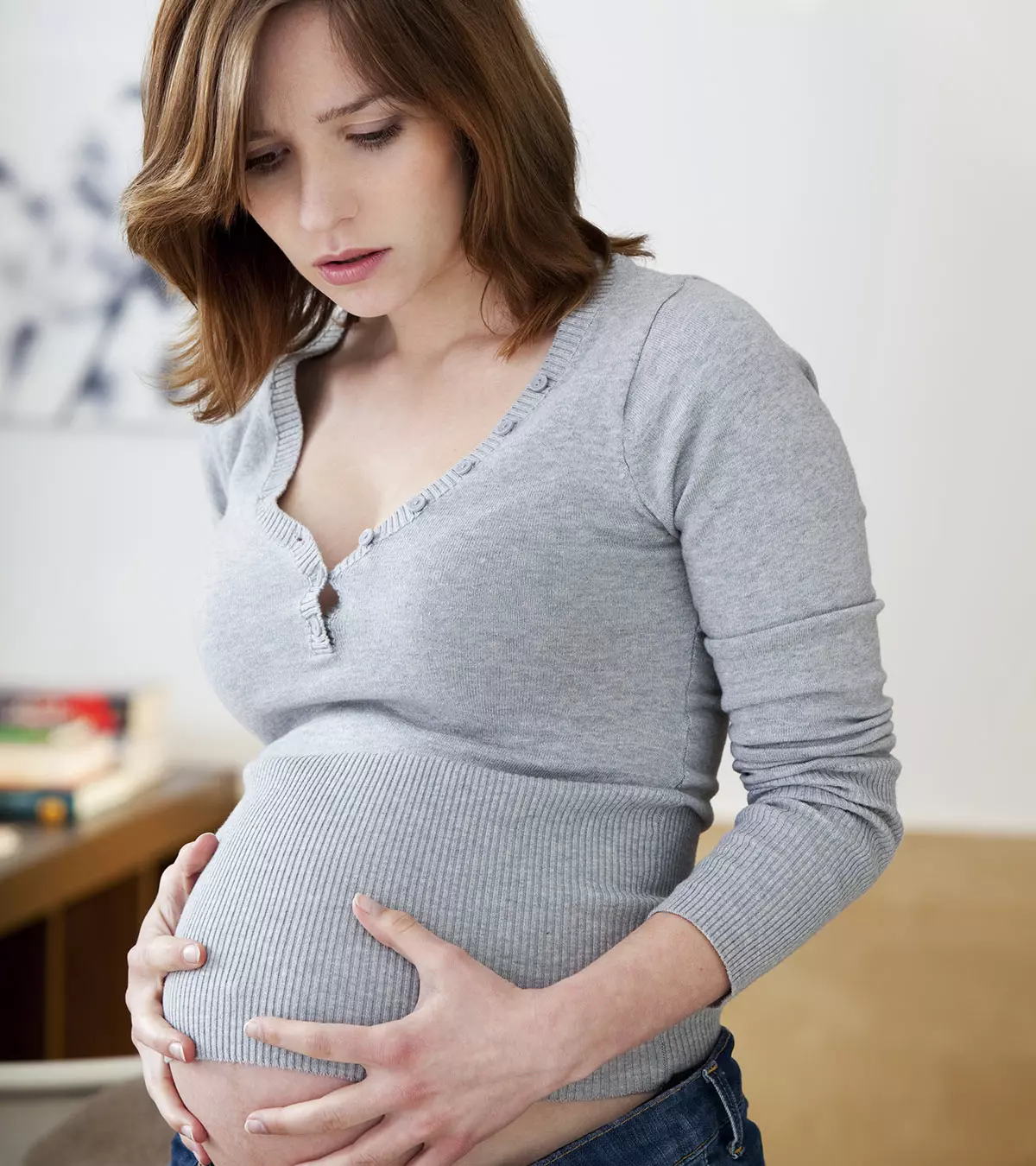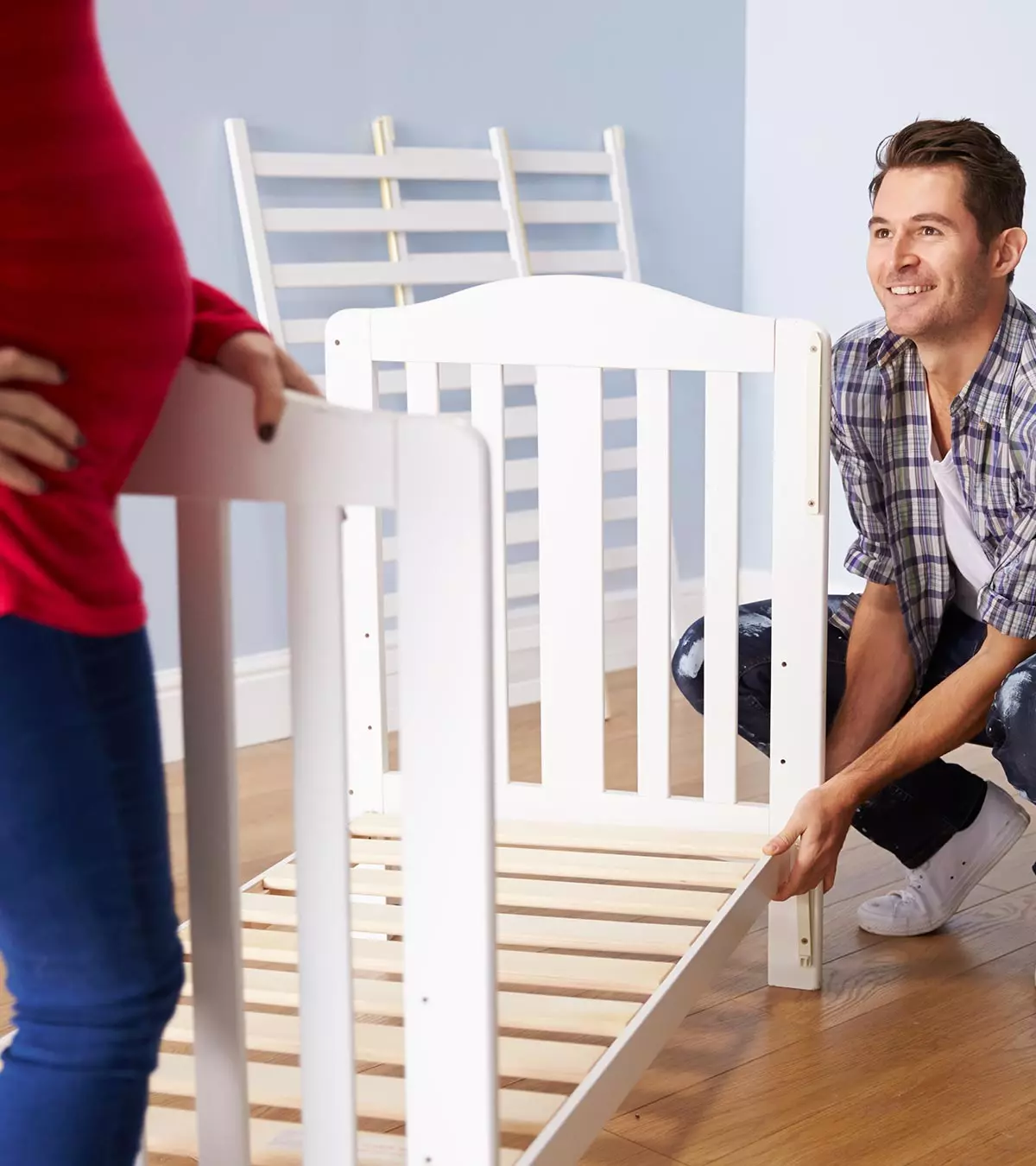
Image: Shutterstock
Women are constantly told not to carry out any strenuous activity during pregnancy. For example, moving furniture while pregnant can require a lot of strength and may not be appropriate for pregnant women. However, it may also be seen that some can comfortably carry out such tasks without any pain or discomfort. Therefore, you may need to know the right techniques, the right time, and conditions to carry out tasks like this safely during pregnancy.
This post will tell everything about moving furniture while pregnant, including its safety and techniques.
Key Pointers
- Pregnant women should avoid strenuous activity, but some tasks may be done safely with proper technique and timing.
- Before moving furniture during pregnancy, especially if experiencing back problems, weakened cervix, low-lying placenta, or pelvic pain, consult a doctor.
- Heavy lifting and physical demands during pregnancy may raise the risk of complications or preterm delivery.
- Due to changes in balance and the risk of falling, be careful while lifting during pregnancy. Instead of bending, squat down.
Is It Safe To Move Furniture While Pregnant?
There are no safe limits that can be medically recommended for you to move around furniture while you are pregnant.
As a general rule of thumb, you must let others move the furniture for you. However, you can do certain activities with your doctor’s permission and guidance (1).
It may not always be possible for you to avoid situations where you need to move some furniture around. Understanding some concerns and how you can best avoid any mishap is the best step in such a situation.
Things To Consider Before Moving Furniture While Pregnant
Every pregnancy is unique, and different women will react to their pregnancy in different ways. For some women, it may be alright to move furniture while they are pregnant, while for some it may be completely off-limits. Here are a few things you should be aware of before you move furniture during your pregnancy:
1. Consider Your Medical Condition And The Health Of Your Pregnancy:
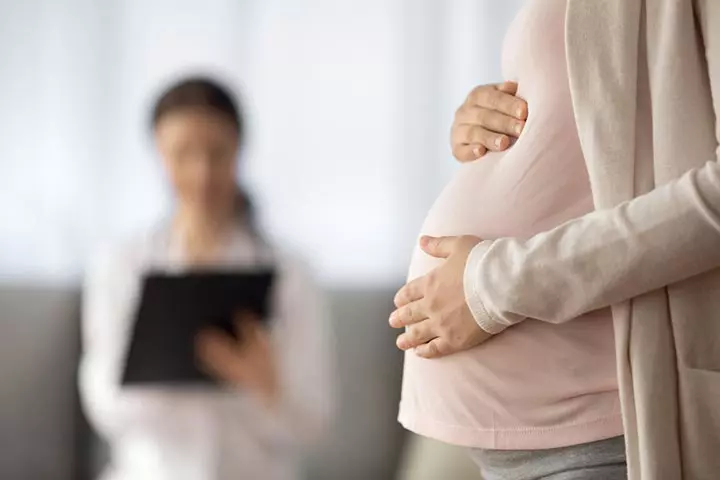
Image: Shutterstock
Take your overall maternal health and the way your pregnancy is progressing into consideration. In case you develop any complications during pregnancy, such as gestational diabetes or high blood pressure, first speak to your doctor about it and abstain from any strenuous activity. Backache and back-related problems are quite common during pregnancy. Consult a doctor before moving furniture if you have been advised bed rest, or have back pain, a weakened cervixiThe lowest portion of the uterus that connects to the vagina to form a passage between the two organs. , a low-lying placentaiA temporary organ that develops during pregnancy and provides the fetus with oxygen and nutrients. , or pelvic pain (2).
2. Understanding How Much Is Okay And When To Stop:
While the evidence is inconclusive, some research suggests that heavy lifting during pregnancy may lead to obstetric complications or an increased risk of preterm delivery (3).
According to the Centers for Disease Control and Prevention, increased physical demands such as standing for long hours, bending a lot during pregnancy, or lifting heavy objects can increase a pregnant woman’s chances of miscarriage, preterm labor, or injury during pregnancy (4).
Listen to your body and do not push yourself beyond the limits of your comfort. It is important to practice stress management. Additionally, it is important to be aware of exercises to avoid during pregnancy to prevent excessive physical strain or undesirable consequences. It is also vital to be careful while practicing prenatal exercise or do it only under an expert’s observation.
 Quick fact
Quick fact3. How Can I Lift Things While I Am Pregnant?

Image: IStock
When you are pregnant, your body finds it difficult to maintain balance. Your center of gravity changes and lifting things incorrectly can hurt both you and your baby. It also increases your chances of falling, so you need to be extra cautious (3).
Remember to squat down to pick up things instead of bending. Once you have picked up something, stand back gently. The pressure should fall on your legs and not on your back. Try and hold on to some support while squatting down or getting up. This will keep you safe and help minimize the risk of falling while pregnant (1).
 Quick fact
Quick factFrequently Asked Questions
1. Why does cramping happen after moving furniture while pregnant?
During pregnancy, as the baby grows, the uterus expands, causing the muscles around the abdomen to pull and cause cramping. Additionally, the center of gravity shifts, putting more pressure on the lower back, making the abdominal area more vulnerable to strain (3). In such a situation, lifting objects in the wrong position, lifting heavy objects, or moving furniture may cause the muscles to pull and cramp.
2. When should a pregnant woman stop lifting heavy things?
Expecting mothers at risk of premature delivery should stop lifting heavy objects after the first trimester due to health concerns (1). Generally, experts recommend talking to a doctor if a mother is lifting more than 50 lbs (23kg) after the 20th week of gestationiThe period of carrying and developing an embryo or fetus until birth within the female womb. or lifting more than 24 lbs (11kg) after the 24th week of pregnancy (5). A mother with a normal pregnancy should speak to their healthcare provider to know when they should stop lifting objects, to ensure optimum prenatal care.
3. How do I know if I’ve overexerted myself while moving furniture during pregnancy?
Experiencing a sudden, sharp, shooting, or persistent pain, feeling excessive fatigue, shortness of breath, feeling dizzy, lightheadedness, or noticing vaginal spotting or bleeding may be some signs of overexertion.
4. What should I do if I experience discomfort or pain while moving furniture during pregnancy?
If you experience mild backache or discomfort from lifting, you could sit on a chair and elevate your foot onto a stool. However, if it does not subside, you may need pain-relieving medications, for which a doctor’s consultation would be necessary (6).
5. What are safer alternative ways for pregnant women to move furniture?
There are several alternative ways to move furniture. Plan and enlist help from others, and consider using furniture carrying straps, sliders, or dollies to reduce the need for lifting. Disassemble any removable parts from furniture to make items lighter and easier to move. You can also use a scaffold plank to maneuver items from height. However, there is insufficient research to determine its efficacy for pregnant women. Therefore, it is advised to exercise caution before lifting or moving heavy furniture.
You may be advised against lifting heavy objects or performing strenuous activities during your pregnancy. Moving furniture while pregnant may be difficult for some women but not for others. However, since every pregnancy is different, your health condition is the only indicator of what kind of activities you may perform. Therefore, to ensure safety, seek your doctor’s opinion on the weight restrictions and other care measures you should be taking. Consider any medical conditions, such as backache or pregnancy complications, understand your body’s limits, and maintain good posture while lifting anything. Even if your health condition is good, it is advisable to ask for help moving furniture when pregnant.
Infographic: Important Considerations For Lifting Objects During Pregnancy
Hormonal changes during pregnancy loosen the tissues and ligaments. They, in turn, increase the risk of muscle strains and injury. The changes in the body can make moving and lifting things challenging. Scroll through the infographic below to learn some points to remember when lifting objects during pregnancy.
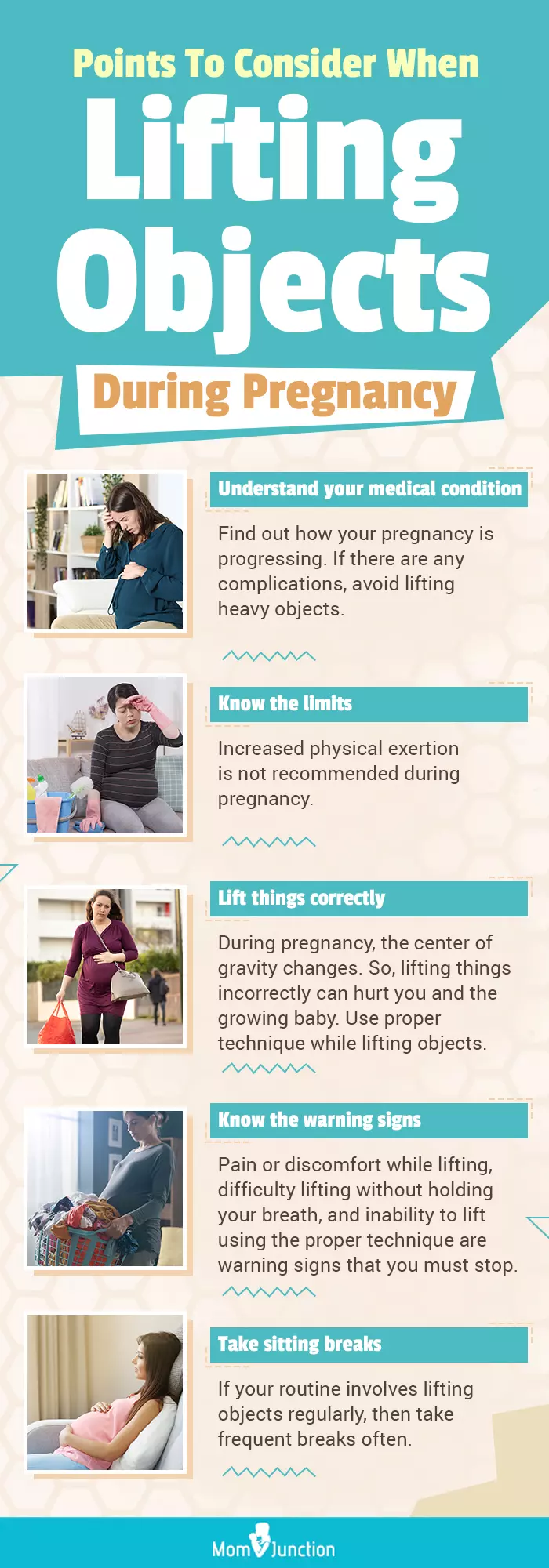
Illustration: Momjunction Design Team
Illustration: Is It Safe To Move Furniture While Pregnant?

Image: Dalle E/MomJunction Design Team
References
- Lifting While Pregnant.
https://americanpregnancy.org/healthy-pregnancy/is-it-safe/lifting-pregnancy/ - When to be careful when exercising in pregnancy.
https://www.tommys.org/pregnancy-information/im-pregnant/being-healthy/exercise/exercise-careful-pregnancy - Lifting and work restrictions during pregnancy: Talk it over with your doctor.
https://utswmed.org/medblog/lifting-during-pregnancy/ - About Physical Job Demands and Reproductive Health
https://www.cdc.gov/niosh/reproductive-health/prevention/physical-demands.html?CDC_AAref_Val=https://www.cdc.gov/niosh/topics/repro/physicaldemands.html - Working during pregnancy.
https://www.pregnancyinfo.ca/your-pregnancy/healthy-pregnancy/working-during-pregnancy/ - Coping With Common Discomforts of Pregnancy
https://www.ucsfhealth.org/education/coping-with-common-discomforts-of-pregnancy
Community Experiences
Join the conversation and become a part of our nurturing community! Share your stories, experiences, and insights to connect with fellow parents.
Read full bio of Dr. Neha Singh
Read full bio of Ria Saha
Read full bio of Rebecca Malachi
Read full bio of Aneesha Amonz











